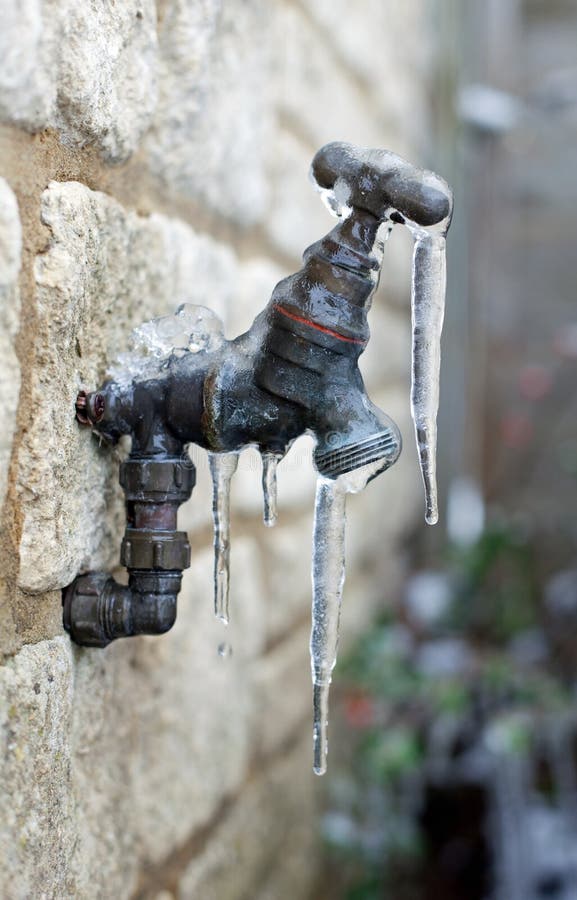Tips to Protect Pipes from Cold Weather: Expert Advice
Tips to Protect Pipes from Cold Weather: Expert Advice
Blog Article
This post down the page in relation to Winter Plumbing Precautions: Preventing Frozen Pipes is indeed entertaining. Read it for your own benefit and decide what you think of it.

Cold weather can damage your pipes, specifically by freezing pipelines. Right here's exactly how to stop it from taking place and what to do if it does.
Introduction
As temperature levels drop, the danger of icy pipes rises, possibly resulting in expensive repair services and water damage. Comprehending exactly how to stop frozen pipes is vital for homeowners in cold environments.
Avoidance Tips
Insulating susceptible pipelines
Cover pipes in insulation sleeves or make use of warm tape to shield them from freezing temperature levels. Concentrate on pipelines in unheated or external areas of the home.
Home heating techniques
Maintain indoor rooms sufficiently heated, specifically locations with pipes. Open up cupboard doors to permit warm air to distribute around pipes under sinks.
Exactly how to identify frozen pipelines
Search for reduced water circulation from taps, uncommon smells or noises from pipelines, and noticeable frost on subjected pipelines.
Long-Term Solutions
Architectural changes
Take into consideration rerouting pipelines far from exterior wall surfaces or unheated locations. Include additional insulation to attics, basements, and crawl spaces.
Updating insulation
Purchase high-grade insulation for pipelines, attics, and walls. Proper insulation helps keep regular temperatures and reduces the threat of frozen pipelines.
Securing Outdoor Pipes
Garden hoses and exterior faucets
Separate and drain yard hoses prior to winter. Set up frost-proof faucets or cover exterior faucets with protected caps.
Recognizing Frozen Pipes
What creates pipelines to freeze?
Pipes ice up when subjected to temperature levels listed below 32 ° F (0 ° C) for extended periods. As water inside the pipes freezes, it expands, putting pressure on the pipe walls and potentially causing them to rupture.
Dangers and problems
Frozen pipes can result in water interruptions, residential property damage, and costly repair services. Burst pipes can flooding homes and trigger extensive architectural damages.
Indications of Frozen Pipeline
Recognizing icy pipelines early can avoid them from rupturing.
What to Do If Your Pipes Freeze
Immediate activities to take
If you presume frozen pipes, keep taps available to ease pressure as the ice thaws. Use a hairdryer or towels taken in hot water to thaw pipelines slowly.
Verdict
Avoiding icy pipes calls for proactive actions and quick feedbacks. By understanding the reasons, signs, and preventive measures, home owners can shield their plumbing during winter.
5 Ways to Prevent Frozen Pipes
Drain Outdoor Faucets and Disconnect Hoses
First, close the shut-off valve that controls the flow of water in the pipe to your outdoor faucet. Then, head outside to disconnect and drain your hose and open the outdoor faucet to allow the water to completely drain out of the line. Turn off the faucet when done. Finally, head back to the shut-off valve and drain the remaining water inside the pipe into a bucket or container. Additionally, if you have a home irrigation system, you should consider hiring an expert to clear the system of water each year.
Insulate Pipes
One of the best and most cost-effective methods for preventing frozen water pipes is to wrap your pipes with insulation. This is especially important for areas in your home that aren’t exposed to heat, such as an attic. We suggest using foam sleeves, which can typically be found at your local hardware store.
Keep Heat Running at 65
Your pipes are located inside your walls, and the temperature there is much colder than the rest of the house. To prevent your pipes from freezing, The Insurance Information Institute suggests that you keep your home heated to at least 65 degrees, even when traveling. You may want to invest in smart devices that can keep an eye on the temperature in your home while you’re away.
Leave Water Dripping
Moving water — even a small trickle — can prevent ice from forming inside your pipes. When freezing temps are imminent, start a drip of water from all faucets that serve exposed pipes. Leaving a few faucets running will also help relieve pressure inside the pipes and help prevent a rupture if the water inside freezes.
Open Cupboard Doors
Warm your kitchen and bathroom pipes by opening cupboards and vanities. You should also leave your interior doors ajar to help warm air circulate evenly throughout your home.

We were guided to that report on Winter Plumbing Precautions: Preventing Frozen Pipes from an acquaintance on another blog. Sharing is caring. Helping people is fun. Thanks for your time. Don't hesitate to come by our blog back soon.
Book Report this page